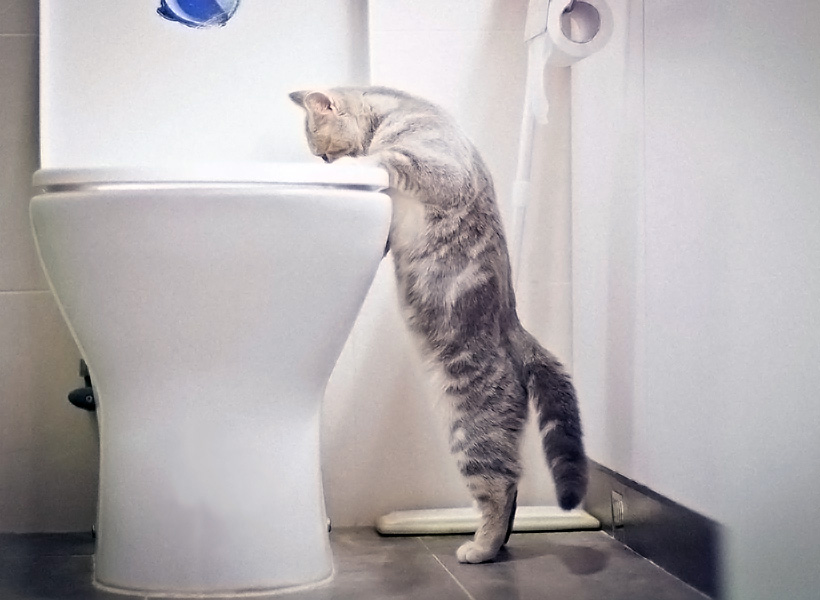Avoid Flush Cat Poop Down Your Toilet - Maintain Your Home's Pipe System
Avoid Flush Cat Poop Down Your Toilet - Maintain Your Home's Pipe System
Blog Article
What are your insights and beliefs on How to Dispose of Cat Poop and Litter Without Plastic Bags?

Intro
As pet cat proprietors, it's essential to bear in mind how we get rid of our feline pals' waste. While it may appear practical to purge cat poop down the commode, this method can have destructive repercussions for both the setting and human health.
Alternatives to Flushing
Fortunately, there are much safer and extra responsible methods to dispose of cat poop. Think about the following alternatives:
1. Scoop and Dispose in Trash
The most usual method of throwing away feline poop is to scoop it right into a naturally degradable bag and throw it in the garbage. Make sure to use a dedicated trash scoop and deal with the waste quickly.
2. Use Biodegradable Litter
Choose naturally degradable pet cat clutter made from materials such as corn or wheat. These litters are eco-friendly and can be safely disposed of in the trash.
3. Hide in the Yard
If you have a yard, think about burying pet cat waste in a marked location away from vegetable gardens and water resources. Be sure to dig deep sufficient to prevent contamination of groundwater.
4. Set Up a Pet Waste Disposal System
Invest in a pet garbage disposal system especially made for pet cat waste. These systems use enzymes to break down the waste, decreasing odor and environmental impact.
Wellness Risks
Along with environmental worries, flushing feline waste can also pose health and wellness risks to people. Cat feces might contain Toxoplasma gondii, a parasite that can create toxoplasmosis-- a potentially severe health problem, specifically for pregnant women and individuals with weakened immune systems.
Ecological Impact
Purging cat poop presents damaging virus and parasites into the water system, posing a considerable danger to aquatic ecological communities. These pollutants can negatively influence marine life and concession water quality.
Verdict
Responsible family pet possession extends past offering food and shelter-- it likewise involves appropriate waste administration. By refraining from flushing cat poop down the toilet and opting for alternate disposal methods, we can decrease our environmental footprint and protect human health.
Why Can’t I Flush Cat Poop?
It Spreads a Parasite
Cats are frequently infected with a parasite called toxoplasma gondii. The parasite causes an infection called toxoplasmosis. It is usually harmless to cats. The parasite only uses cat poop as a host for its eggs. Otherwise, the cat’s immune system usually keeps the infection at low enough levels to maintain its own health. But it does not stop the develop of eggs. These eggs are tiny and surprisingly tough. They may survive for a year before they begin to grow. But that’s the problem.
Our wastewater system is not designed to deal with toxoplasmosis eggs. Instead, most eggs will flush from your toilet into sewers and wastewater management plants. After the sewage is treated for many other harmful things in it, it is typically released into local rivers, lakes, or oceans. Here, the toxoplasmosis eggs can find new hosts, including starfish, crabs, otters, and many other wildlife. For many, this is a significant risk to their health. Toxoplasmosis can also end up infecting water sources that are important for agriculture, which means our deer, pigs, and sheep can get infected too.
Is There Risk to Humans?
There can be a risk to human life from flushing cat poop down the toilet. If you do so, the parasites from your cat’s poop can end up in shellfish, game animals, or livestock. If this meat is then served raw or undercooked, the people who eat it can get sick.
In fact, according to the CDC, 40 million people in the United States are infected with toxoplasma gondii. They get it from exposure to infected seafood, or from some kind of cat poop contamination, like drinking from a stream that is contaminated or touching anything that has come into contact with cat poop. That includes just cleaning a cat litter box.
Most people who get infected with these parasites will not develop any symptoms. However, for pregnant women or for those with compromised immune systems, the parasite can cause severe health problems.
How to Handle Cat Poop
The best way to handle cat poop is actually to clean the box more often. The eggs that the parasite sheds will not become active until one to five days after the cat poops. That means that if you clean daily, you’re much less likely to come into direct contact with infectious eggs.
That said, always dispose of cat poop in the garbage and not down the toilet. Wash your hands before and after you clean the litter box, and bring the bag of poop right outside to your garbage bins.
https://trenchlesssolutionsusa.com/why-cant-i-flush-cat-poop/
Do you really like reading up on How to Dispose of Cat Poop and Litter Without Plastic Bags? Post feedback down below. We'd be pleased to find out your ideas about this blog. We are looking forward to see you back again later on. Make sure you take the time to promote this blog if you enjoyed it. Thanks for going through it.
Make An Appointment Report this page